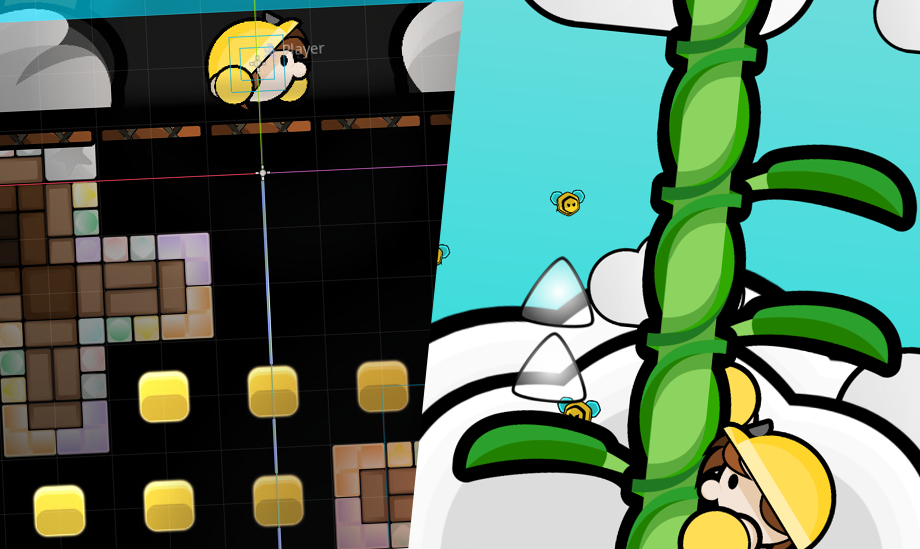On Designing Your First Game

I got a Games Development Diploma that was really an escape route from a stable however rough job a long while ago, After graduating, I was invited back to partake in a one day GameJam.
My old classmate and good friend decided to team up and enter the competition together. We submitted a simple 1v1 physics based knock over the blocks game. We won that competition, which was an unexpected experience because there were many other competitors that I would consider to be much better than myself.
On reflection, simplicity won out. While the other competitors overwhelmed themselves with grand designs we unknowingly found that we needed something small, polished and submitted soon. A new revelation I continued to ignore for a very long time.
Who is this article for?
Let me get this straight: This is not advice for people who are just starting to make games.
For those fledgling designers, you should download a game engine and start throwing everything at it. Make new projects and abandon them like used napkins. It is fun to just focus learning how to wield the tools and making things work. Learn to walk!
This article is for people who want to make a full game that will be released to the public. It’s about going from walking to running, from amateur to pro.
Setting the stage…
After picking up Godot, I had created multiple abandoned projects with each intended to be my first game. I would continue to come up with grand designs, get overwhelmed by the scope and in that revelation would create a brand new project… With the same level of scope unwittingly restarting the cycle.
That led to a lot of time and materials being consumed for unnecessary polish, instead of being purely spent on learning how to use the development tools.
After I came to this realisation, I grabbed assets from a previous project and repurposed them to create Slamburrowers: Climb.
What I thought the process would have to be was…
- Make the Game.
- Put it on the Store
- Win
I was wrong.
Creating the Game
If you have having issues with coming up with a game scope that is small enough, allow me to present guard rails for your idea.
Simple Goal
The game should have a clear Win or Lose condition and the method should be straight forward. No shame in something endless however I would recommend something to make a sessions short (1-5 Minutes) yet repayable.
Basic Input
Try to limit yourself to directionals and one or two buttons / swipes / gyro tilts. I find that the simpler the controls the more you can focus on polishing the inputs.
Avoid Manual Content
If you can get away with not having to make manual creations such as levels, It will drastically decrease the amount of creation and play-testing required. Try opt for generating content on the fly via a little randomness where possible.
Remember the Player
Put Simply, Put a save system in, it doesn’t need to be too fancy. Even just a list of High Scores, Total Scores or Lifetime Stats can help the game feel more personalised. It also gives the player a goal to beat there previous best or have some sort of tie to their progress.
💡 If you are SUPER drawing a blank here is a cheeky shortcut. YouTube “Mario Party All Mini-Games” and pick something out to make your own. I did something similar yet turned it into an endless runner. As long as you don’t add a Red Italian plumber you should be able to remix it enough to keep it fresh.
The Release Grind
To be honest, Slamburrowers: Climb is an embarrassingly simple game however it gave me insight on what happens AFTER a game is completed.
This Included…
- Setting up Billing
- Testing Mobile Builds
- Creating and Publishing on a Public Storefront
- Building Icons and Screenshots for Public Storefronts
- Building a Website
- Hosing a Privacy Policy
Suffice to say, a little bit more in-depth than expected but the experience was well worth it.
When the Dust Settles
Once complete, Pat yourself in the back but more importantly, Get back in the saddle as soon as possible. I am talking drawing up a design document or even just messing around with prototypes again. It keeps you in the swing of things and helps you keep you on the right track.
I made the mistake about living on my laurels for a bit too long on release, My next game would take a year to come out.
Final Thoughts
Short and simple is all that is required for you’re first release and don’t forget to have fun with it!
The above is not being said to scare you. If you’re passionate about something, do it, this is not even just limited to game development. You can honestly look at something and say this is enriching and can build me up, you should run up to it with open arms.
